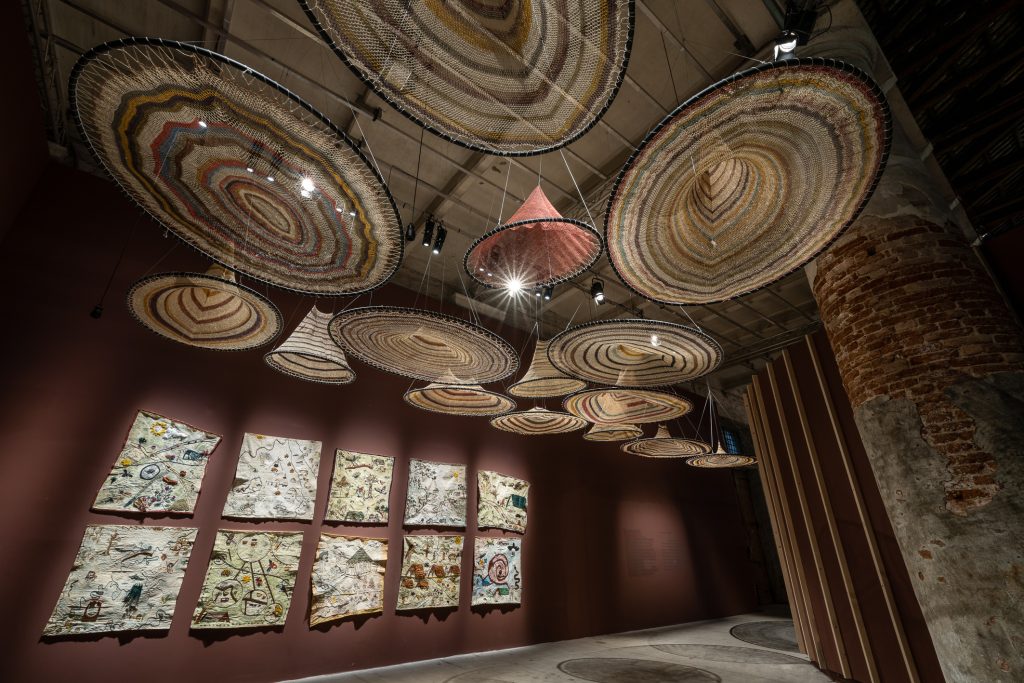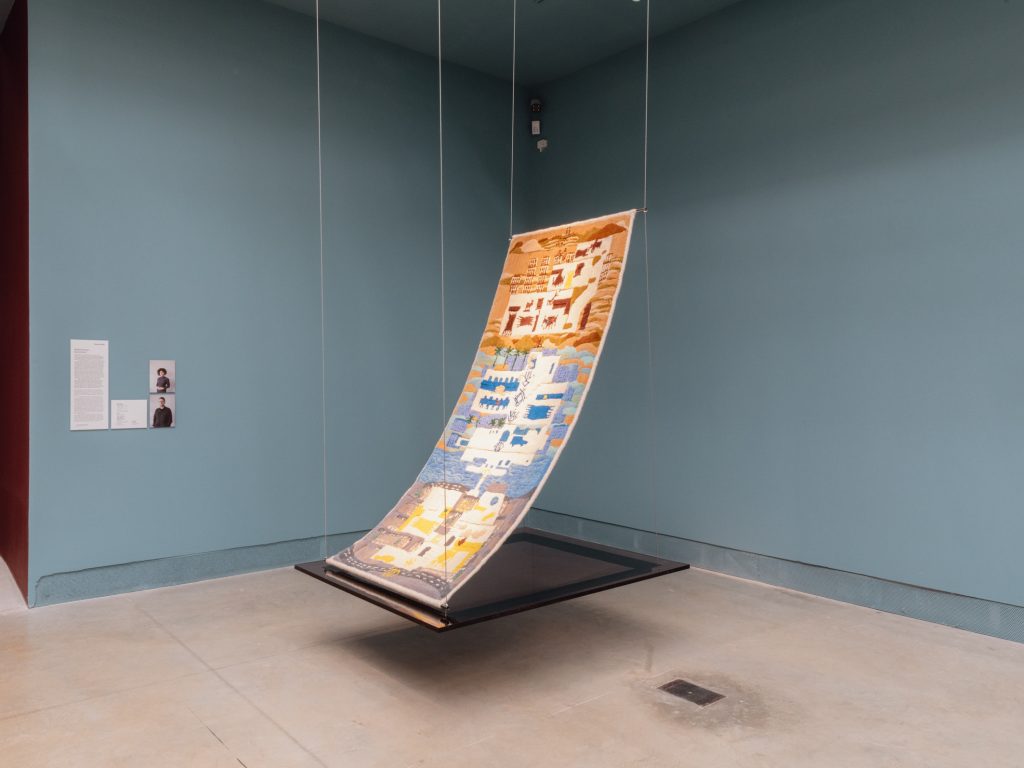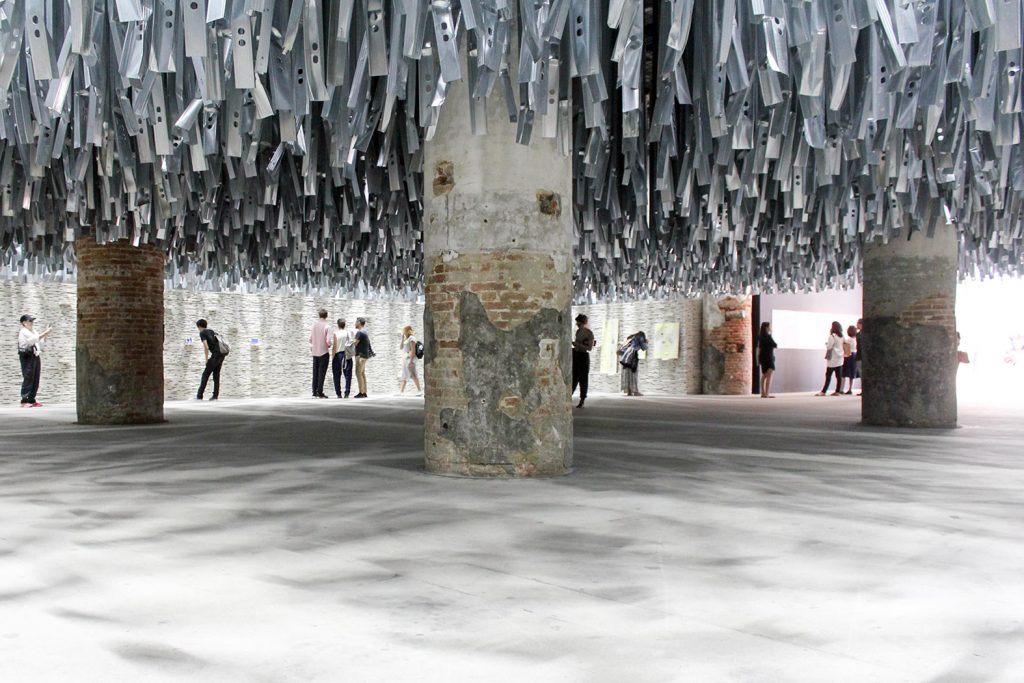Venice Architecture Biennale 2023: Textile as a Metaphor for the Future
“The Laboratory of the Future” is the theme of the 18th Biennale Architettura, and fabrics play a crucial role in its storytelling

The 18th International Architecture Biennale exhibition in Venice, on view until 26 November, focuses on the traditionally marginalized realities of architecture, especially those of Africa, and linked to the African diaspora. The goal of curator Lesley Lokko was to present people and themes rarely addressed in mainstream architecture because they come from the world’s poorest areas. This inclusivity and diversity was evident throughout the biennials opening days, but it will be apparent to all visitors when they discover the work presented by the invited architects, who Lokko refers to as “agents of change.”
Lokko is aware that something is missing in mainstream architecture today. “The dominant voice has historically been a singular, exclusive voice, whose reach and power ignores huge swathes of humanity—financially, creatively, conceptually—as though we have been listening and speaking in one tongue only,” she says. “The story of architecture is, therefore, incomplete. Not wrong, but incomplete. It is in this context particularly that exhibitions matter.”
For this reason, the theme chosen for the central exhibition of this edition of La Biennale is “The Laboratory of the Future,” addressed in many different ways by the exhibition’s participants. We saw high-tech advancements, projects dedicated to recovering raw materials, works focused on saving water, housing solutions for migrants, and public spaces for small and large groups. One of the common traits of these projects was the choice to represent them through fabrics and weaving—with the latter representing one of the oldest forms of design and architecture. We synthesized some of the most exciting ideas of La Biennale through the lens of the laboratory, allowing us to discover some of the most compelling visions for the future of architecture.

“Loom” by Leslie Lokko
The main venues of the Biennale—through which the main exhibition and national pavilions are distributed—are Arsenale (a former military complex) and Giardini (garden). Inside the Giardini area, at the entrance to the Central Pavilion, visitors are welcomed by an installation created by Leslie Lokko herself. The title is “Loom,” and although it is not a textile project, it summarizes the entire exhibition. In fact, dozens of red outlines represent the projects in the next rooms. They all hang from wires that, like in a loom, metaphorically weave the fabric of La Biennale.

“Ghebbi” by AD-WO
New York-based studio AD-WO presents a speculative project centered around “ghebbi.” In the Amharic language, a ghebbi is a space surrounded by a fence or a wall, a delimited area where houses, schools or shops can be hosted. They can be temporary and mobile, as is the installation in Venice. Built between two sections of the Arsenale, it creates a division in the path of visitors through the use of impressive tapestries and waxed tarpaulins, a colorful reminder of how spaces can be variable and subject to change.

“Bengali Song” by Arinjoy Sen
Architect Arinjoy Sen’s offers a platform for marginalized people, allowing them to define their own narratives. He does so with “Bengali Song,” a series of precious fabrics hand-embroidered by artisans belonging to the SHE Kantha collective in Bengal. On these panels are craftspeople at work: masons, weavers, architects and a choral song reminiscent of an epic poem.

“Surfacing. The Civilised Agroecological Forests of Amazonia” by Estudio A0
Several projects at La Biennale make innovative use of LiDAR, enabling practitioners to discover the present and past of entire territories. Quito-based architecture and research firm Estudio A0 applied such technology to the analysis of five millennia of civilization in the area of the Amazon River. The research results have been turned into narrative of embroidered drawings made with raffia, chambira palm, wooden beads and seeds.

“Threads” by Kate Otten Architects
About two billion years ago, a meteorite struck the region near present-day Johannesburg, South Africa. The impact laid the foundation for gold, a mineral that marked the city’s history since its discovery in 1886. Kate Otten Architects tell this story through a suspended frame—a map that intersects space and time, superimposing historical maps, rural areas and cities between sociological and geographical evolutions.

“The Great Endeavor” by Liam Young
Fiction and critical design are areas of interest for Liam Young, an Australia-born film director and architect. At the Arsenale, he presents an evocative video where he imagines a futuristic facility that will extract carbon from the atmosphere. Young asked artist and costume designer Ane Crabtree, creator of The Handmaid’s Tale‘s costumes, to imagine the ideal workwear for such a task. The result is fascinating and presents overalls adorned with data-inspired embroidery that appears to be natural encrustations on fabric.

“Mediterranean Queendoms” by New South
Architect Meriem Chabani was born in Algeria, while her associate John Edom is from the UK. Together, they live and work in Paris, where they run New South, a studio focused on international architecture, urban design and research. Their mission to engage with territories in tension led to the idea of “queendom,” an idealized destination that links Chabani’s family between France and Algeria. There, women are in charge of nourishing, transporting, dressing and ultimately caring for a family spread across two continents and three cities. The tapestry on display at Giardini represents a typical yet unsung layering of lives.
Hero image by Evan Orensten












